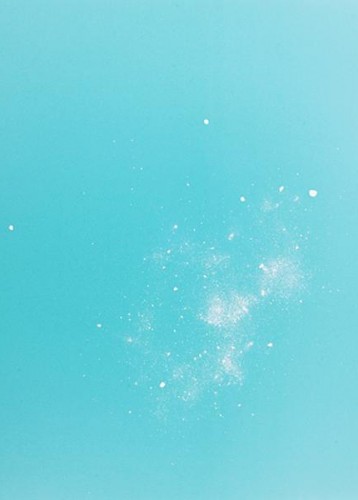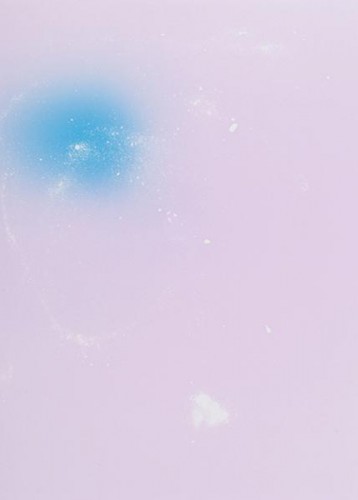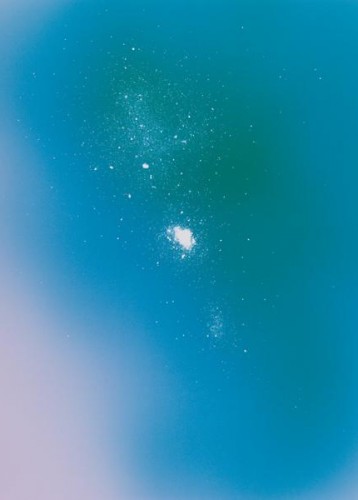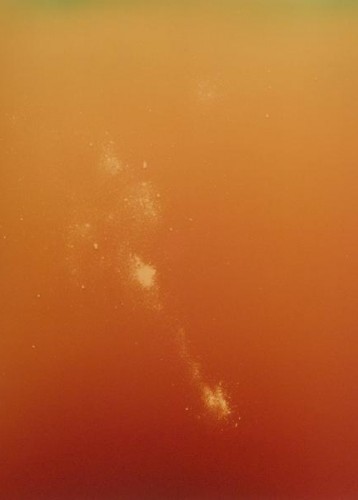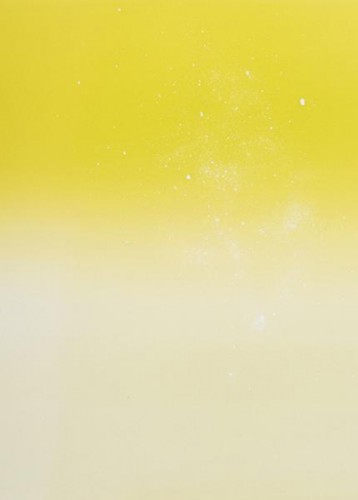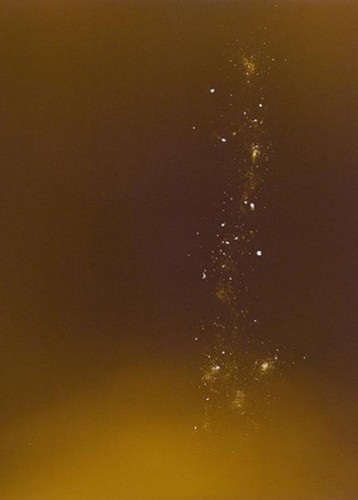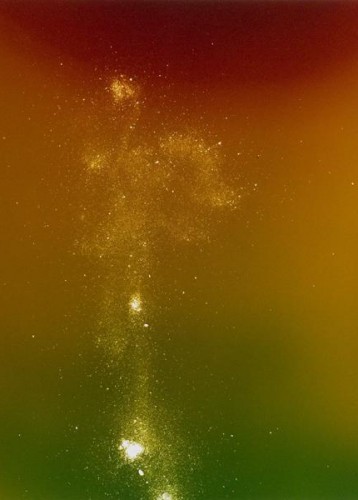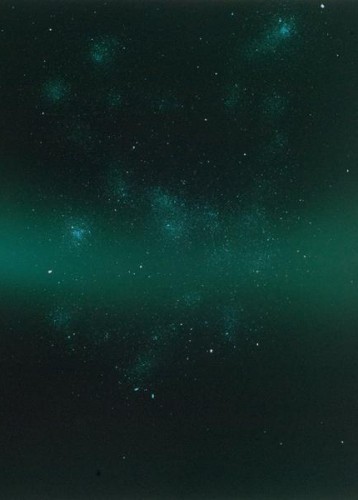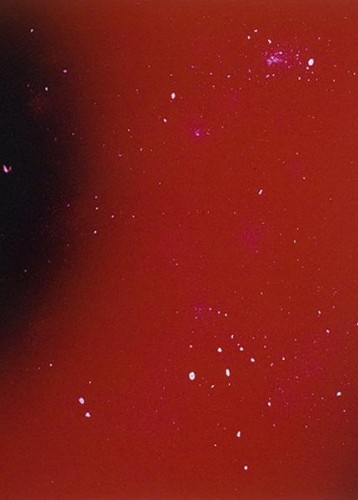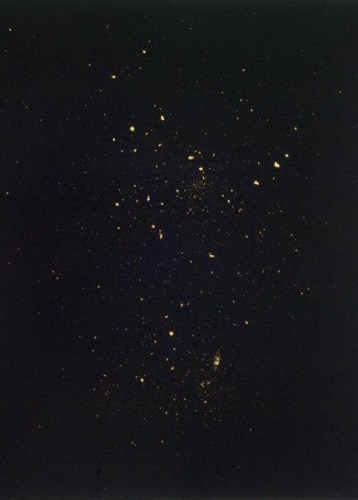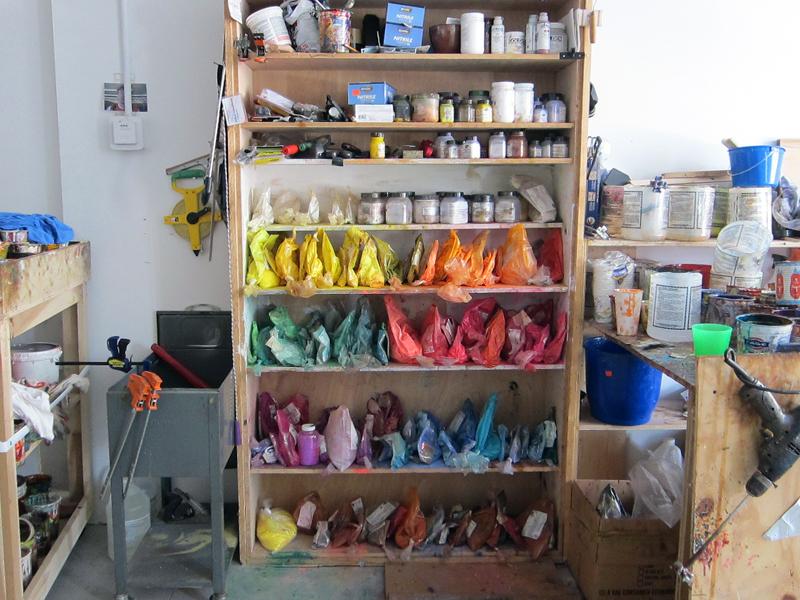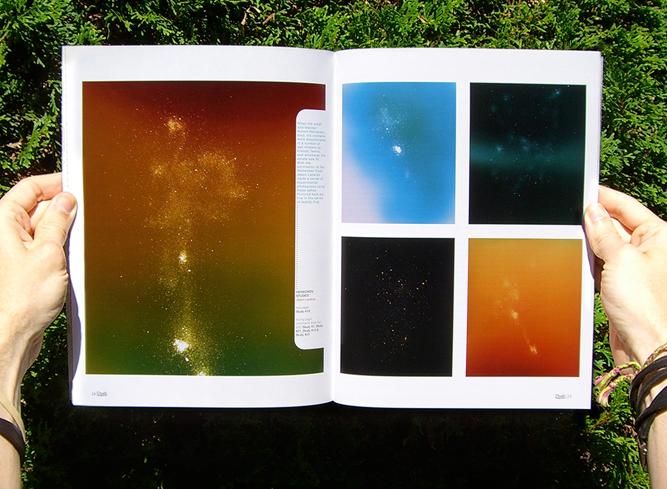
10.08.10
Excerpt: Magazine
Death Magazine, Issue #2
The funny thing about Death magazine — a thrice-yearly publication inviting designers, artists, and writers to use humanity’s darkest subject as a creative catalyst — is that it’s not really all that morbid. You’d get more depressing stuff asking musicians to write songs about love. While Portland-based graphic designer Forrest Martin was moved to found the magazine last year in part by a deep-seated fear about his eventual demise (“I’m an agnostic worrier raised by a professional hypochondriac,” he told a blog at the time), his contributors filter the issue at hand through all kinds of artistic lenses, some of them masterfully subtle. In Death‘s recently launched second issue, Michael Zavros’s lush large-scale charcoal drawings of young male models with their faces scratched out could just as easily be from an artsy spread in a fashion glossy as they could a death threat from a homicidal stalker, while photographer Jason Lazarus‘s super-saturated color fields, sprinkled with the cremated remains of the late artist Robert Heinecken, on first glance resemble star systems photographed in deep space. Sight Unseen invited Martin to expound upon Lazarus’s submission as presented in the magazine by asking him a few questions about the process behind his project, with the results on view in the slideshow at right. Death is also available online in its entirety at the magazine’s website.
Forrest Martin: Who is Robert Heinecken, and did you have a relationship with him before he died?
Jason Lazarus: Robert Heinecken, from the late ’60s to the late ’90s, opted to use mass-media imagery as his “negative” in the photographic process to create a layered critique of image culture. His work often conflates, reverses, juxtaposes, and re-contextualizes familiar signifiers and takes them to task. I didn’t know Robert, only his photographic work. Later, I met his longtime studio assistant Luke Batten, who took over the daily operations of the Heinecken estate.
FM: When most people first look through the magazine, they assume these images are telescopic visions of space and star clusters. In fact, they’re photograms of a man’s ashes. Can you explain what photograms are, and why this seemed like the best thing to do with a salt shaker full of incinerated flesh and bone?
JL: Photograms are simply photographic paper that has been exposed to something other than a projected negative image. After struggling for a long time with how to work with the ashes, it became obvious that the process was the most appropriate way to pay homage to Heinecken because of his distinctive commitment to this particular way of creating imagery.
I decided to create a series of photograms where each image was a response to the photogram made before it. The first photogram is solid cyan, and each one that follows is some variation color filtration, time, multiple light sources, multiple exposures, and burning/dodging. This loop from creation and experimentation to assessment and creation again seemed to me the answer to respecting the spirit in his many years of making photographic works. The series of 25 images was made in one sitting at Columbia College Chicago. It felt important to not break the creative process once I started.
FM: When handling Robert’s cremains for this project, did you treat them in any special way?
JL: Yes and no. At first I was literally trembling when opening the salt shaker. It was a great moment to reconcile myself with not only a great photographer, but mortality as a physical material in my hand. In the complete blackness of the color darkroom and once you get into a groove, the material ends up spreading out around your work area, getting on your clothes — there’s no way to avoid it. The working process became about gaining familiarity and comfort with the texture and feel of the material rather than fetishizing it.
FM: What considerations did you find most important when working on this project?
JL: The most important consideration for me was to find the right conceptual parameters for working with the material: using the darkroom, involving experimentation in the process, and not breaking the experimentation process until the series was fully realized.
